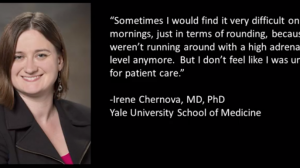NEW YORK (Reuters Health) – Breast cancers that are ER/PR negative and HER-2/neu nonamplified are more likely than those without triple negative status to show a complete pathologic response to neoadjuvant therapy, new research shows. The results also indicate that a complete response to neoadjuvant endocrine therapy is rare compared to neoadjuvant chemotherapy.
The study findings were presented Friday at the American Society of Breast Surgeons 10th annual meeting in San Diego, California.
“There have been several studies in the past to cover this topic,” senior author Dr. Julie A. Margenthaler told Reuters Health. “The unique aspect of our study is that we included patients who underwent neoadjuvant chemotherapy and those who underwent neoadjuvant endocrine therapy. We found that the rate of pathologic complete response was significantly higher in the chemotherapy group than in the endocrine therapy group.”
In their study, Dr. Margenthaler and colleagues, from Washington University School of Medicine, St. Louis, analyzed data from 603 breast cancer patients who received neoadjuvant chemotherapy or endocrine therapy at their center from 2000 to 2007.
Following systemic therapy, all of the women underwent surgical resection of their malignancy. A patient was considered to have had a complete pathologic response if no residual invasive cancer was present on final specimen analysis.
Overall, a complete pathologic response was seen in 14% of patients. As noted, the rate was significantly higher in patients treated with neoadjuvant chemotherapy versus endocrine therapy: 15% vs. 5% (p < 0.05). Multivariate analysis revealed ER/PR negativity, HER-2/neu nonamplification, and negative lymph node status to be independent predictors of a complete pathologic response. However, Dr. Margenthaler said that her team was surprised to find that a complete pathologic response did not translate into improved survival. “This may be due to our inclusion of higher numbers of patients with T1/T2 tumors and the inclusion of both chemotherapy and endocrine therapy treatment arms.” “Future prospective studies,” she said, “should be geared toward understanding the genetic differences in these various breast cancer phenotypes so that specific therapies may be used in a targeted manner to increase pathologic response rates and improve overall survival.”




